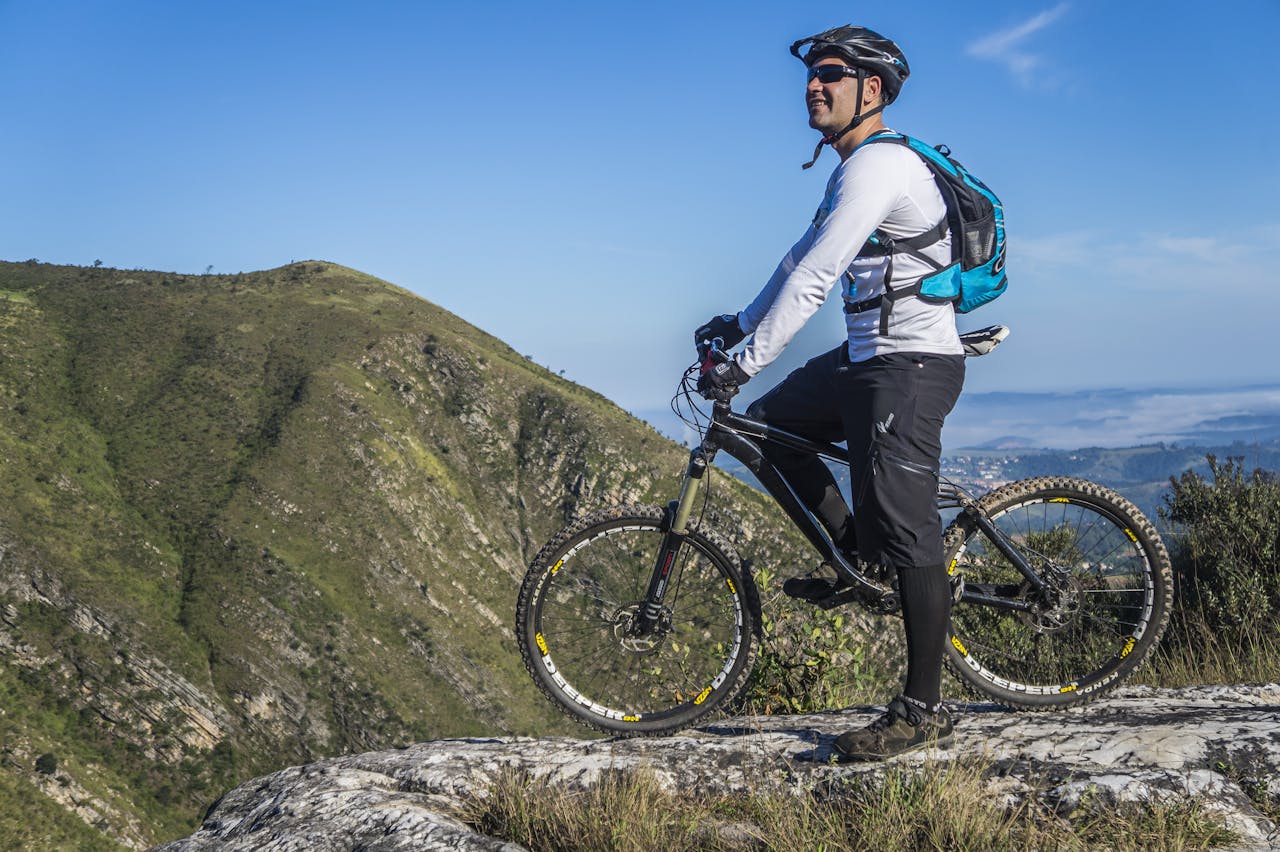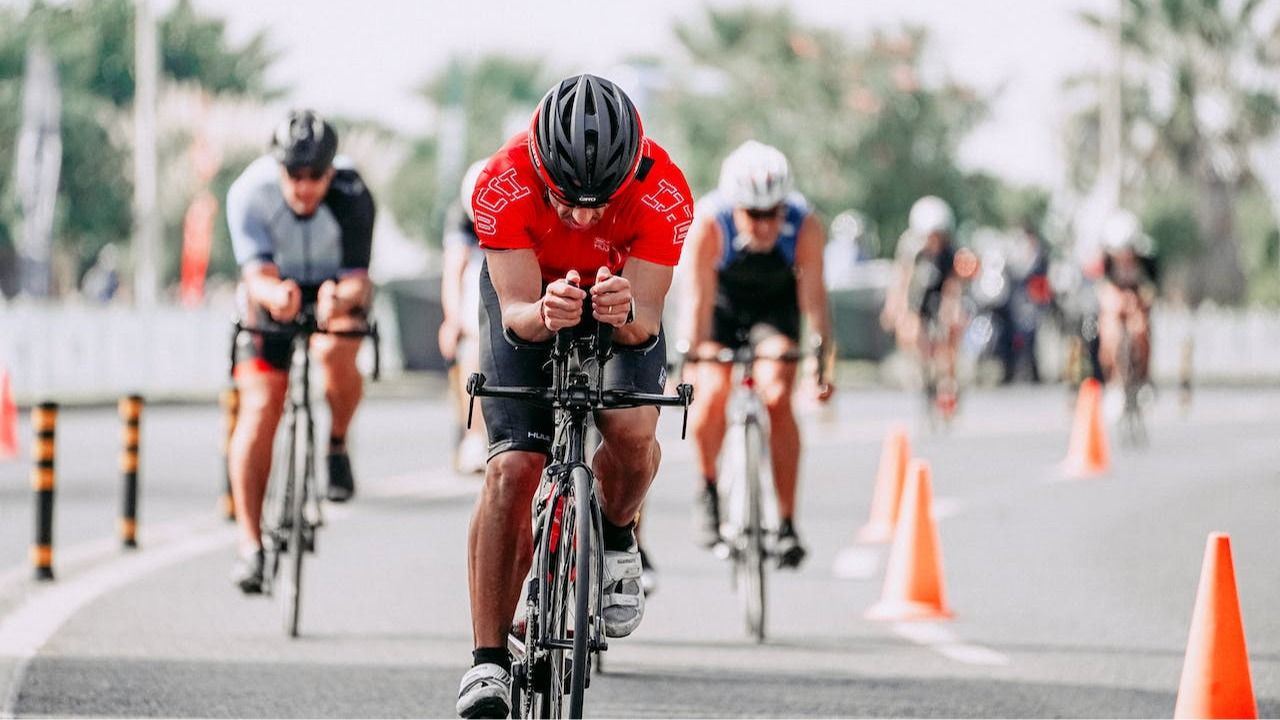Cycling safety tips for a secure fitness journey
Riding a bike for fitness is absolutely incredible for your body. It improves your cardio endurance. The problem is, like anything in life, you have to do it the right way.
Thinking of cycling more seriously for fitness?
Hold on to your helmet… Here's a statistic that might shock you. Cyclist deaths hit 1,377 in 2023. This is a 53% increase over the past 10 years. This isn't an attempt to discourage you from one of the best fitness options available.
It's an attempt to wake you up.
Here's the honest truth…
Riding a bike for fitness is absolutely incredible for your body. It improves your cardio endurance. It builds leg strength without pounding your joints. It can torch serious calories. The problem is, like anything in life, you have to do it the right way.
The good news is, most cycling accidents can be 100% avoided when you know what you're doing. Whether you're a beginner or a seasoned rider, the right equipment at a good quality ensures you have what you need for a safe cycling for fitness experience.
And this is where this guide comes in…

Source: Pexels
The real truth about cycling safety
Before we get started, there's one thing you need to know…
Cycling is not dangerous. Being unprepared is.
To explain…
Nearly 1,000 bicyclists die every year in the US on roads. But out there are MILLIONS of safe cyclists riding every day.
What's the difference between those making it home and the stats?
They practice basic safety.
Most people make cycling safety more complicated than it needs to be. It's really quite simple. It's the basics and you need to follow them every single time.
So what do smart cyclists have in common?
- They wear proper safety gear (and not just helmets)
- They plan their routes carefully
- They maintain their equipment
- They ride predictably and defensively
Got that?
It's really not complicated. But here's the problem…
Most cyclists are so focused on their workout data – distance, speed, heart rate – that the basics are an afterthought. Don't be that guy.
Essential safety gear for cycling fitness
Did you know the #1 mistake new fitness cyclists make is…
Believing a helmet is all they need.
WRONG.
Okay, don't get me wrong. Helmets are of course 100% essential. We know that wearing a properly fitted helmet that meets safety standards reduces head injury risk by 60% and brain injury risk by 58%.
But it doesn't stop there when it comes to staying safe on your bike.
The Complete safety kit
1. Helmet (Yep, you still need one)
Let's start with the obvious one – your noggin. Get a helmet that fits correctly and meets safety standards. Replace it every few years or if you take a hard hit.
2. High visibility clothing
Bright colors and reflective materials are NOT a fashion statement. They save lives. Fluorescent yellows, oranges, greens during the day. Reflective stuff for early morning or evening rides.
3. Lights (Front and rear)
Lights make you MORE visible. Even on daytime hours. White light up front, red in back. This is not optional.
4. Gloves
Protect your hands if you fall. Improve your grip. Reduce hand fatigue on longer rides.
5. Eye protection
Sunglasses or clear safety glasses keep stuff, bugs, wind out of your eyes. Can't see? Can't ride safely.
Here's the thing most cyclists don't realize…
The best safety gear is the gear you'll actually wear consistently. Keep it simple. Invest in quality basics. Wear them every single time. If you live in the US, bike shop Murray offers good-quality bike accessories and outdoor equipment.
How to plan safe routes for cycling fitness
This is where most fitness cyclists make a huge mistake.
They plan their routes for their fitness workout goals. Distance, terrain, hills. Nothing else.
They COMPLETELY ignore safety.
The key to planning safe cycling routes is like this:
Choose your roads carefully
Not all roads are made equal for cycling. You want:
- Low volume of traffic whenever possible
- Wide shoulders or bike lanes
- Good visibility (no blind corners or hills)
- Smooth pavement to reduce accidents
Timing is important
Peak traffic hours are dangerous for cyclists. Avoid these times by riding:
- Early morning before rush hour
- Mid-morning after traffic subsides
- Early afternoon before evening rush
- Never during commuter rush periods
Always have back up plans
Weather changes. Construction. Traffic shifts. If you don't have alternatives mapped out, you're going to be forced to make dangerous last-minute decisions. And you don't want to be that guy.
Treating route planning like you treat your fitness goals is a good place to start. Shorter but safer is a lot better than a trip to the emergency room.
Essential visibility tips for safe cycling
This is one of the most terrifying cycling statistics…
The most common cause of cycling fatalities is simply because drivers didn't see the cyclist. They weren't being reckless, they just didn't SEE them.
And that's FRIGHTENING. And completely avoidable.
The visibility triangle
Visibility is 3D, think about it like this…
Distance — Be as visible from as far away as possible Contrast — Stand out from your environment Movement –- Motion catches attention
Lighting strategy
What works?
- Steady front light for you to see the road
- Flashing rear light for eye-catching attention
- Side lights or reflective tape on wheels
- Helmet light to show head movement
Road positioning
Take up your space. Be predictable. Don't hug the curb so tightly you're invisible or erratic for drivers.
Above all, make eye contact with drivers whenever possible. If you can see their eyes, they see you.
Bike maintenance for injury prevention
The last thing most people think about for cycling safety…
Is bike maintenance.
Equipment failure at the wrong moment can be disastrous, possibly fatal.
You don't have to be a bike mechanic, but basic maintenance that keeps your ride running predictably is EXTREMELY important for safety on fitness rides.
Pre-ride safety check ("ABC" check)
Quick check before every ride.
- A - Air: Check tire pressure
- B - Brakes: Test both front and rear brakes
- C - Chain: Quick visual for damage or excessive wear
Weekly maintenance
- Check tire tread and sidewalls for damage
- Inspect brake pads for wear
- Test shifting performance
- Look for loose bolts or damage
When to get help
When in doubt, don't DIY.
- Brake adjustments
- Wheel truing
- Headset or bottom bracket issues
- Anything you're not confident about
The reality about bike maintenance…
It's not about being paranoid. It's about being prepared. A predictable bike = a safe bike.
Cyclists' emergency preparedness tips
Hope this never happens to you, but always be prepared for the worst case scenario.
Carry these things on every ride:
- Cell phone in waterproof case
- ID and emergency contact info
- Basic first aid kit
- Tire repair kit and pump
The aim is not to be paranoid. The aim is to be so well-prepared you can enjoy your cycling for fitness without worry.
Wrapping it all up
Cycling for fitness is one of the healthiest decisions you can make for your body.
Builds cardiovascular fitness. Strengthens muscles with low impact. Can be sustained your whole life.
If you do it safely.
The difference between those who can enjoy decades of riding and the cyclist stats?
They take safety seriously from day 1. They invest in proper equipment. They plan routes. They maintain their bikes. They don't get complacent.
Bottom line…
If you want to make progress towards your fitness goals you can't do it from a hospital bed. Prioritize safety above all else. Build good habits. Expand your cycling boundaries gradually. Stay safe out there.
Read next: The best cycling accessories you should have

